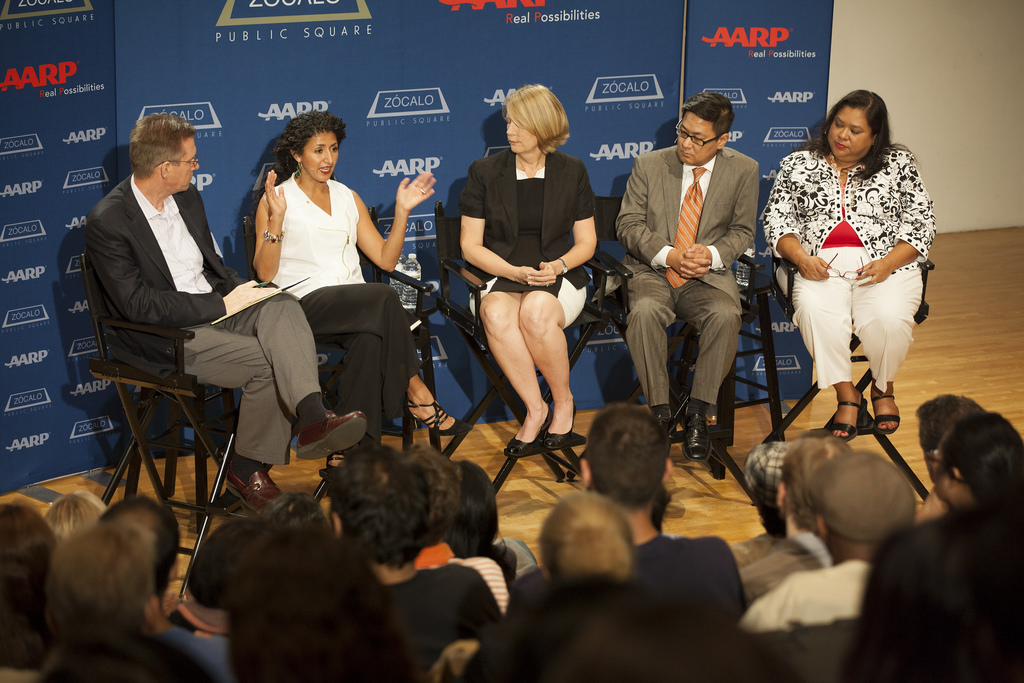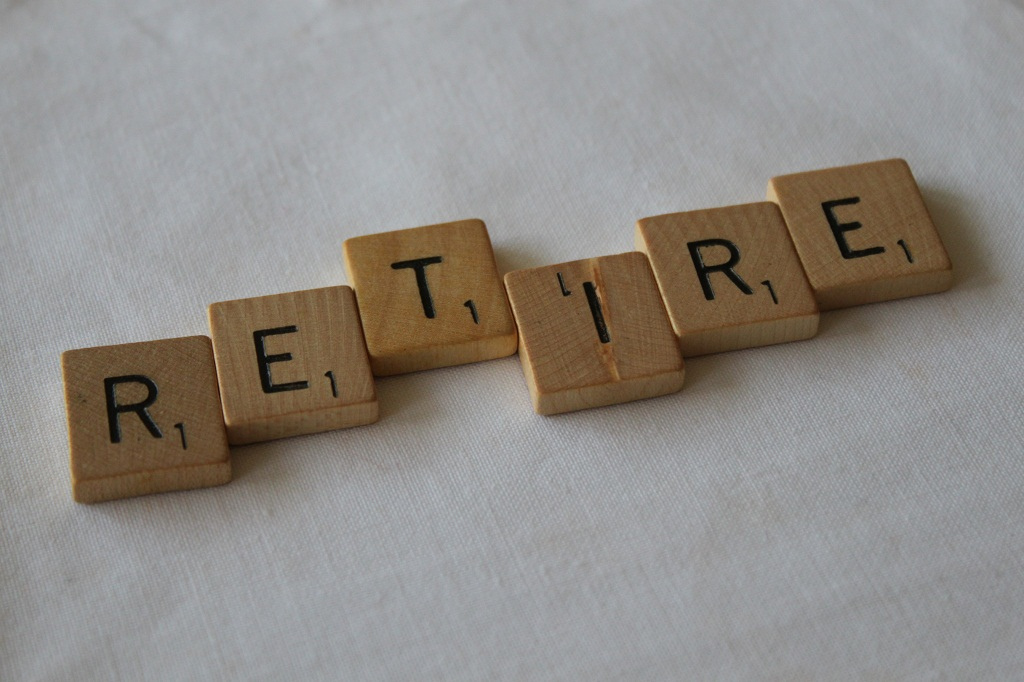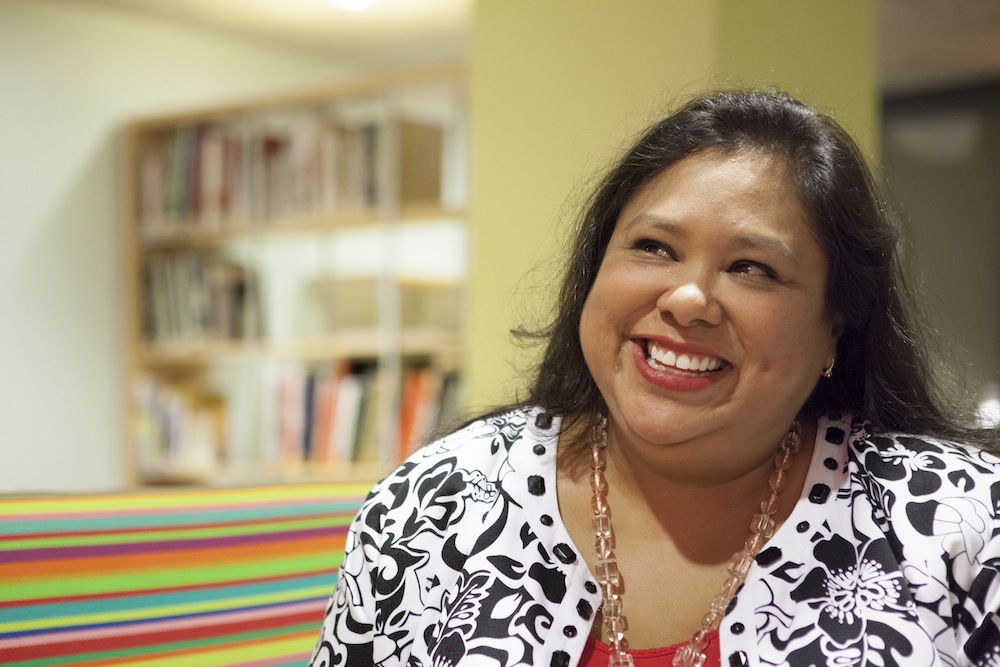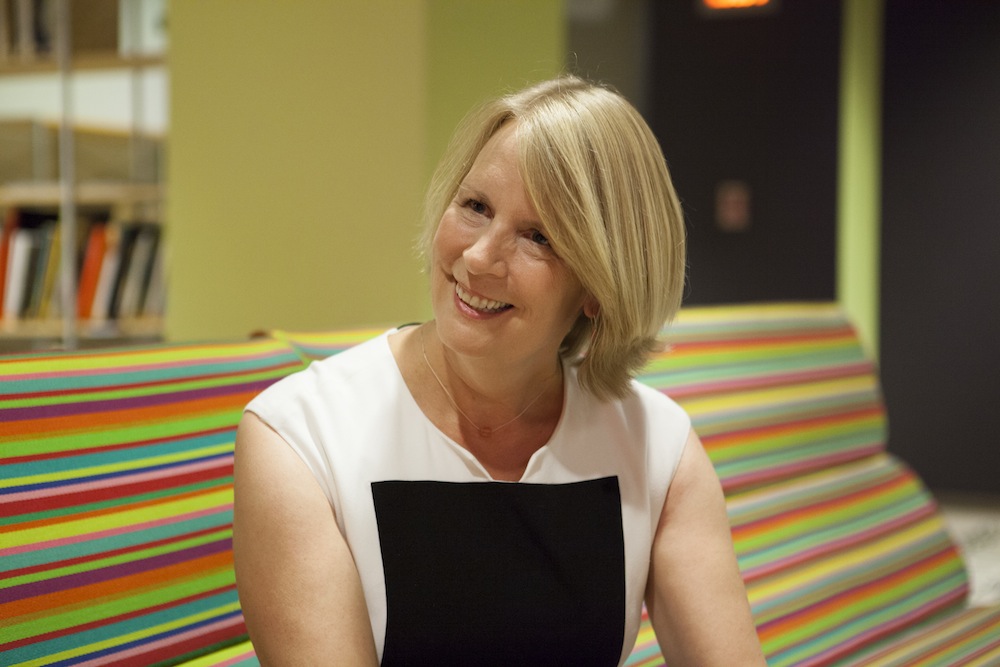
Thinking about retirement is never easy. “We feel your pain,” financial writer Tom Petruno told an audience at MOCA Grand Avenue. “It’s very hard when you’re 25 to think about 65. You can’t even really fathom it.” Petruno was moderating a panel co-presented by AARP on whether young Californians will ever be able to retire.
Petruno said that in the 1970s, his college tuition cost $115 per quarter. The costs of higher education have skyrocketed since then, leading to heavy student loan debt—which is just one of the many obstacles millennials face as they try, or even think about, saving for retirement.
Another obstacle, said personal finance columnist Liz Weston, is that incomes have been shrinking. Today, the median American income is about $51,000. In 1999, it was $56,000. Before we even start talking about retirement, said Weston, we must acknowledge that “we’re not in a situation of stagnant incomes but shrinking incomes.”
City of Los Angeles financial empowerment initiative director Olivia Calderon added that 46 percent of California households live “in a perpetual state of income insecurity.” They don’t have enough assets to tide them over for three months if they were to lose their jobs. These people don’t have pensions or savings plans; they are taking on a lot of risk for expenditures like college tuition, and they have no easy way to save for the future.
What can young people who are lucky enough to be employed at a business with a 401(k) savings plan do to spare themselves this fate?
SagePoint financial advisor Alexander Cruz said that the first thing he asks clients is, “‘Do you have a match?’” If your company matches your 401(k) contribution, they will give you what essentially amounts to free money. Let’s say you make $50,000, and put 5 percent of your salary— $2,500—in a 401(k). If your company does a 50 percent match, you’ll earn an extra $1,250 each year. Forty years later, that $1,250 will be worth “thousands and thousands of dollars,” said Cruz.
Every dollar you save in a retirement account grows 20 times, said Weston. Even after inflation, that’s a lot of money. If you start saving about 10 percent of your income in your 20s, you can have a comfortable retirement. If you wait until your 30s, you have to save about 15 percent. If you wait until your 40s, you have to save a third of your income to match what you’d have if you’d started in your 20s—and that’s difficult. “We have to get people started early so they have a decent retirement,” she said.
But young people—feeling the sting of the financial collapse—don’t necessarily trust the market, said Calderon. They also lack financial education: “Our K-12 education system really needs to be revamped,” she said. We need to grow “a new generation of very savvy investors who feel confident to ask questions and to make better decisions.”
Many of us don’t understand the different retirement options that are available or how they are supposed to work.
Gerri Madrid-Davis, AARP’s director of financial security and consumer affairs, said that 401(k) plans were originally designed to be supplemental savings accounts. Retirees were supposed to have a “three-legged stool” model. Social Security would be your base retirement income; your pension would be a steady stream of income; and your 401(k) would be an additional savings vehicle. But today, only 17 percent of Americans who go to work every day have access to a pension. And many people aren’t aware of the fees that eat into their 401(k) plans.
Weston said that another problem with 401(k) plans is the lack of clear disclosure about fees. In addition, most people aren’t required to sign up or increase their contributions steadily over time. Many people also end up cashing out their plans, and paying a significant amount of money—between one-half and one-third of the amount withdrawn—in taxes and penalties. It might not seem like a lot of money, but a $5,000 withdrawal can end up costing $50,000 in lost retirement savings.
What state and local government initiatives are getting people in the habit of saving?
Calderon pointed to a retirement savings bill authored by California State Senator Kevin de León, which was introduced in 2007 and passed in 2012. The bill creates a publicly administered retirement savings program for private-sector workers without access to an employer-sponsored plan. The plan has not yet been implemented—the legislature has created an advisory committee to design it—but the goal, said Calderon, is “to make it very, very easy for Californians to save.” Saving for retirement should be automatic—where “you have to opt out as opposed to having to opt in,” she said. “We need to make the savings options really simple, because sometimes, less is more.”
Seventeen states are currently looking into adopting similar plans, said Madrid-Davis. Anyone in the workforce can walk into a bank or brokerage house and open an individual retirement account. “But you’re 15 times more likely to participate if you have that account at work,” she said. “A lot of it is getting inertia to work for us instead of against us.”
“Education is incredibly important,” said Madrid-Davis. And there are many resources available to people today online. (The AARP website, for instance, offers free tools like a calculator that helps you figure out when you should start taking Social Security.)
Ultimately, said Petruno, “time is the most powerful tool.” The earlier you start saving, the better off you are.
In the question-and-answer session, the panel was asked what young people who can’t get into the housing market should do about the absence of such a traditional asset.
Petruno said this was a non-issue: Houses aren’t the best investments and can, in fact, be “money pits” with a lot of unseen costs.
However, said Madrid-Davis, owning a home “is still part of the American Dream,” particularly for people who want more than what their parents had. There’s value in that kind of aspiration—and buying a house can be a good investment, as long as buyers do their homework and are honest about what they can afford.








Send A Letter To the Editors